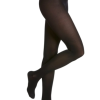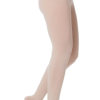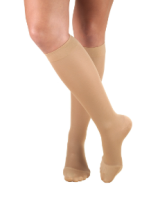
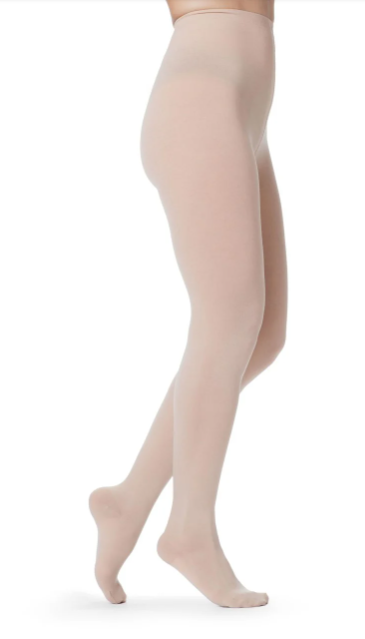
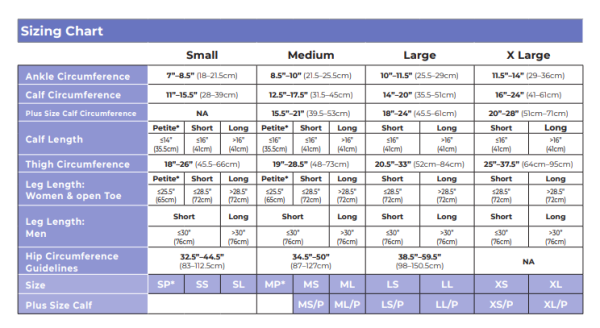
Sigvaris Women Opaque 860 Pantyhose Stockings
$219.00
20-30 mmHg Compression Level
Product successfully added to the Quote List
Description
he Sigvaris Soft Opaque 860 Series Pantyhose Compression Stockings offer a perfect blend of therapeutic compression, comfort, and style. With a compression level of 20-30 mmHg, these pantyhose provide moderate support, ideal for managing venous conditions or promoting leg health during daily activities, long periods of standing, or travel. Crafted from a premium blend of materials, the Soft Opaque 860 Series delivers a luxurious, soft feel and a fashionable opaque finish, making them an excellent choice for those seeking both medical benefits and a polished look.
Key Features:
- Moderate Compression Level (20-30 mmHg):
- Provides 20-30 mmHg of graduated compression, which is ideal for managing mild to moderate symptoms of varicose veins, venous insufficiency, leg swelling, and for post-surgical or post-sclerotherapy care.
- Soft, Durable Opaque Fabric:
- Made from a blend of 69% Nylon and 31% Spandex, the fabric is incredibly soft against the skin while providing the durability needed for everyday wear. The opaque, non-sheer design offers a smooth, elegant look that effectively conceals veins, blemishes, and skin imperfections.
- All-Day Comfort and Flexibility:
- The pantyhose are designed to provide a comfortable, flexible fit that moves with you. The stretchy, form-fitting material conforms to the body’s natural shape, ensuring all-day comfort without sacrificing therapeutic compression.
- Moisture-Wicking and Breathable:
- The fabric’s moisture-wicking properties help keep legs dry and cool throughout the day. The breathable material ensures comfort, even during long periods of wear, and prevents overheating.
- Comfortable Waistband and Reinforced Seams:
- Features a non-restrictive waistband that sits comfortably around the waist without digging in or rolling down, providing secure all-day wear. Reinforced seams ensure durability and comfort, especially in high-wear areas.
- Shaping Support for a Flattering Fit:
- The pantyhose provide gentle shaping support, offering a flattering fit around the waist, hips, and thighs, while delivering targeted compression to improve circulation and reduce swelling.
- Indications for Use:
- Ideal for individuals experiencing mild to moderate leg swelling, varicose veins, venous insufficiency, or those seeking preventive care during travel or extended periods of sitting or standing.
Benefits:
- Promotes Healthy Circulation: Enhances blood flow from the legs back to the heart, reducing leg fatigue, swelling, and the risk of deep vein thrombosis (DVT).
- Supports Venous Health: Provides effective relief from symptoms of venous disorders and helps in recovery post-surgery or treatment.
Size Measurements
Accurate measurements are essential for selecting the correct size of Pantyhose Stockings to ensure optimal compression, comfort, and effectiveness. Below are the detailed measurement instructions for pantyhose compression stockings:
- Ankle Measurement:
- Measure the circumference of the narrowest part of the ankle, just above the ankle bone.
- Ensure the tape measure is snug but not too tight. This is the most critical measurement for determining the size of the stocking.
- Calf Measurement:
- Measure the circumference of the widest part of the calf.
- Keep the tape measure parallel to the floor and snug against the skin without compressing the calf too tightly.
- Thigh Measurement:
- Measure the circumference of the fullest part of the thigh, approximately 1 inch below the groin.
- Ensure the tape measure is parallel to the floor and snug but not constricting to avoid discomfort.
- Hip Measurement:
- Measure the circumference around the widest part of the hips and buttocks.
- Keep the tape measure level and snug but not tight to ensure comfort and proper fit.
- Waist Measurement:
- Measure the circumference of the natural waistline, usually located about an inch above the navel.
- Keep the tape measure snug but not too tight. This measurement helps determine the fit of the pantyhose around the waist.
- Leg Length Measurement:
- For Pantyhose Stockings: Measure the length from the floor to the top of the thigh while standing upright. This ensures the pantyhose provide full coverage up to the thigh.

Care Instructions
- Daily Washing:
- Wash the compression stockings daily to remove oils, sweat, and dirt that can break down the fabric over time and affect the compression level.
- Daily washing also helps restore the elasticity of the stockings, ensuring they continue to provide proper compression.
- Hand Wash or Machine Wash (Gentle Cycle):
- Hand Wash: Use lukewarm water with a mild detergent. Gently agitate the stockings in the water, then rinse thoroughly to remove all soap.
- Machine Wash: Place the stockings in a mesh laundry bag to protect them from damage. Use a gentle cycle with lukewarm water and a mild detergent.
- Use Mild Detergents:
- Choose a mild detergent that is free from bleach, fabric softeners, or additives, as these can damage the fibers and reduce the effectiveness of the compression.
- Avoid Bleach and Fabric Softeners:
- Do Not Use Bleach: Bleach can weaken the fibers and affect the elasticity and compression level of the stockings.
- Avoid Fabric Softeners: Fabric softeners can leave a residue that diminishes the elasticity and moisture-wicking properties of the stockings.
- Air Dry Only:
- After washing, gently squeeze out excess water without wringing or twisting the stockings.
- Lay the stockings flat or hang them to air dry away from direct sunlight, heat sources, or tumble dryers, as excessive heat can damage the elastic fibers.
- Avoid Ironing:
- Do not iron compression stockings, as the heat can destroy the elasticity and fabric integrity.
- Rotate Stockings:
- Consider having at least two pairs of compression stockings to rotate daily. This allows one pair to rest and recover its elasticity while the other is worn.
- Inspect Regularly for Wear and Tear:
- Regularly check your stockings for signs of wear and tear, such as thinning fabric, holes, or loss of elasticity. If the stockings are damaged, they may not provide the necessary compression and should be replaced.


